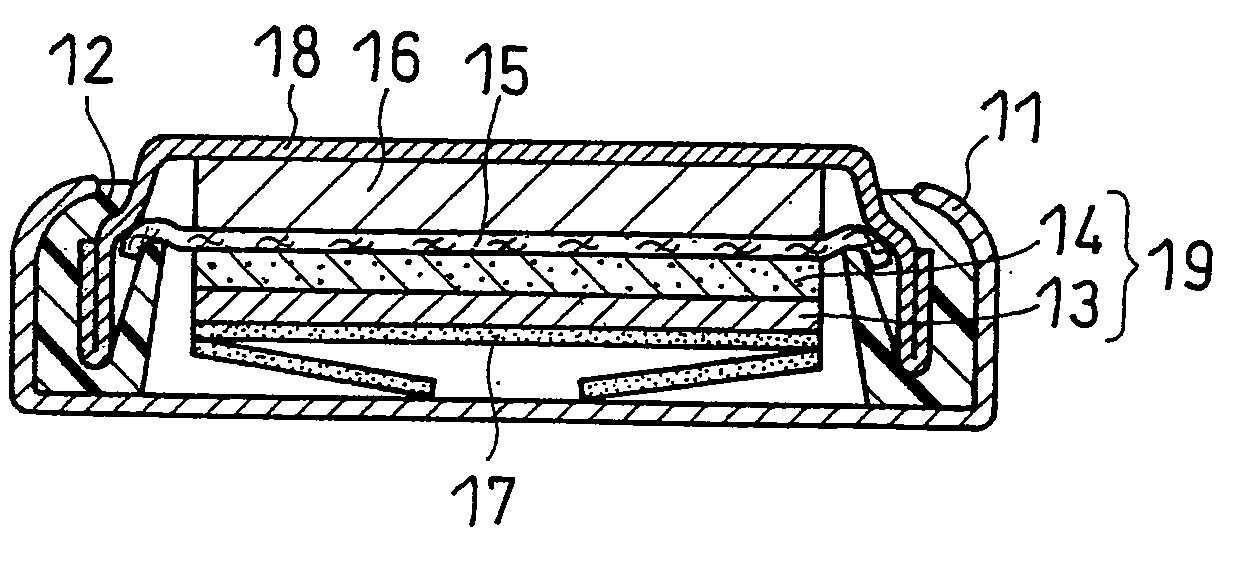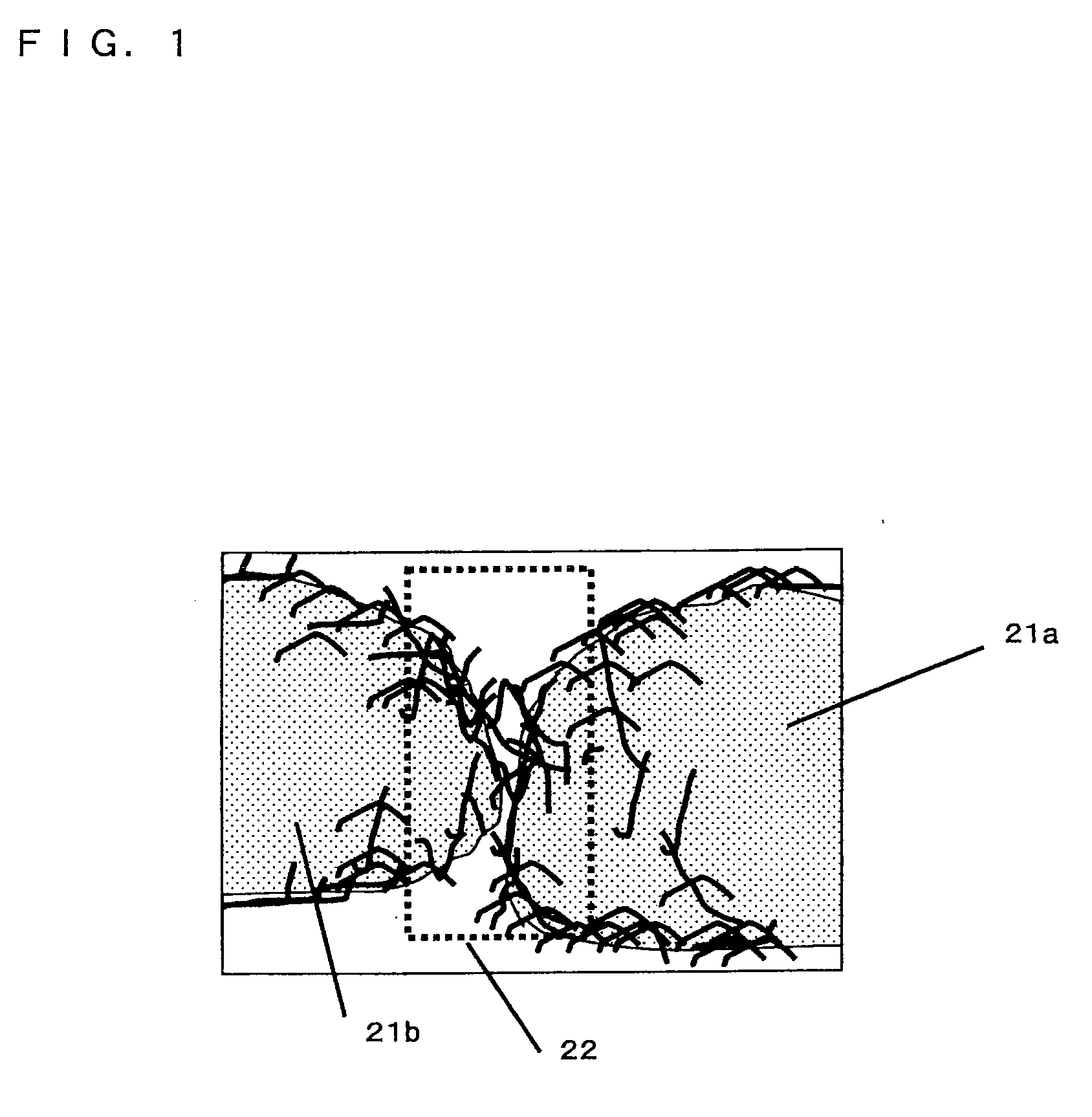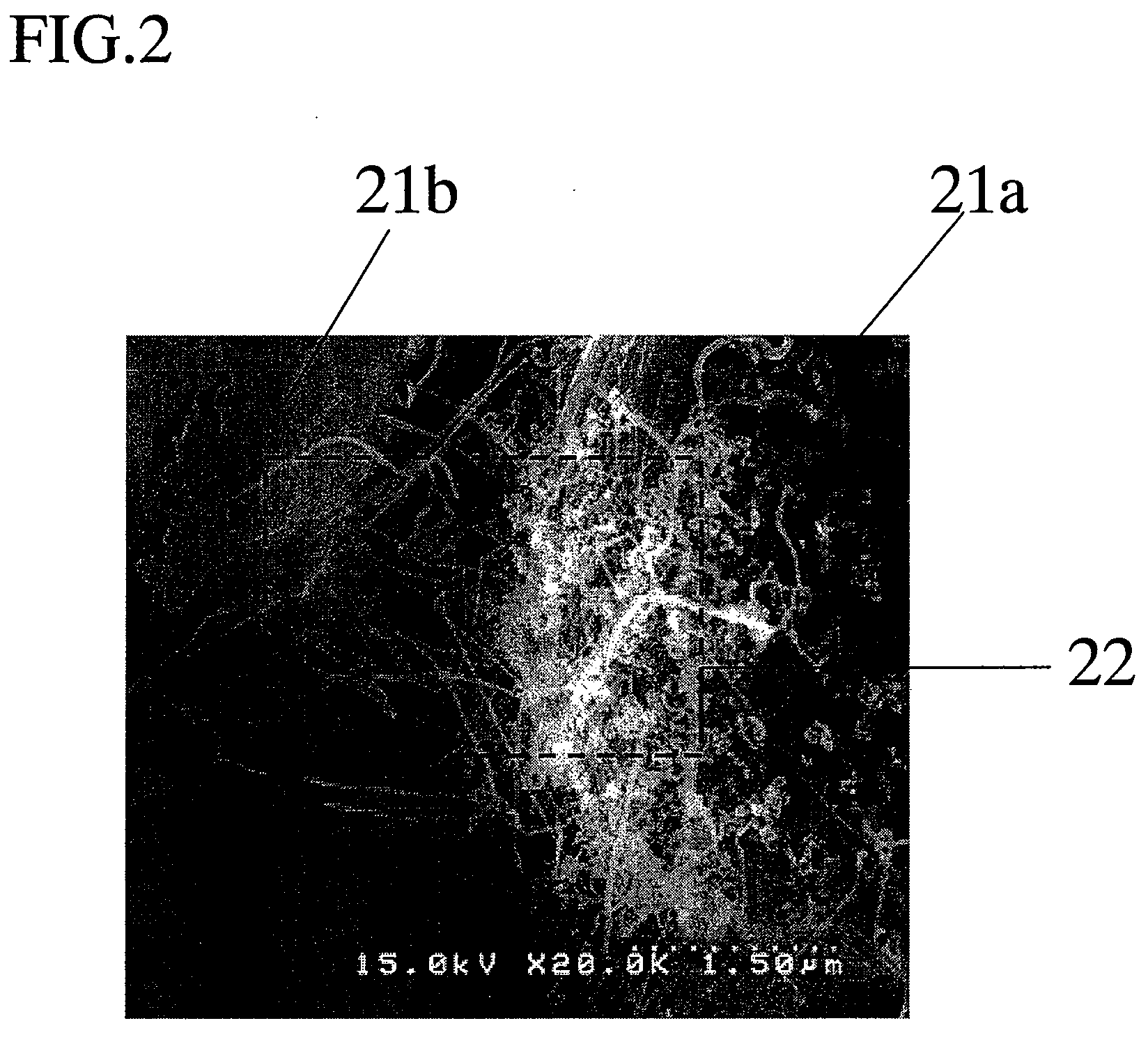Electrode material for electrochemcial device, method for producing the same, electrode using the electrode material, and electrochemical device using the electrode material
a technology of electrode material and electrode material, which is applied in the direction of non-metal conductors, cell components, conductors, etc., can solve the problems of battery performance such as cycle performance decline, significant expansion and contraction of silicon, and decline of electron conductivity between active materials and current collectors
- Summary
- Abstract
- Description
- Claims
- Application Information
AI Technical Summary
Problems solved by technology
Method used
Image
Examples
example 1
Electrode Material Preparation
[0090]A supporting board 3 was fixed at a position directly below and about 300 mm from a torch 10. On the supporting board 3 in a reaction chamber 1, a copper foil with a thickness of 75 μm was disposed as a carrier 4. The copper foil functions as a current collector in the battery.
[0091]Afterwards, the gas in the reaction chamber 1 was displaced by using an air displacement pump 5, and then the reaction chamber 1 was charged with an argon gas. Such operation was repeated several times, to render the atmosphere in the reaction chamber 1 an argon gas atmosphere.
[0092]Then, while introducing an argon gas at a flow rate of 200 L / min from a cylinder 6 and a hydrogen gas at a flow rate of 10 L / min from a cylinder 6a to the torch 10, a high-frequency voltage of 3 MHz was applied to the coil 2, to generate a thermal plasma. The output applied to the coil was set to 100 kW. At this time, the air displacement pump 5 was used to discharge gas in the reaction cha...
example 2
[0100]An electrode was made in the same manner as Example 1, except that to the torch 10, an oxygen gas was further introduced at a flow rate of 5 L / min. Observation of the thus obtained electrode with an electron microscope revealed that particles with a particle diameter of about 5 μm, and nanowires entangled with each other to form a network were generated. The fiber diameter of the produced nanowires was 0.03 to 0.05 μm. By using an X-ray micro analyzer, it was confirmed that the particles and the nanowires included 1:0.2 molar ratio of silicon and oxygen. To be specific, the composition of the particles and the nanowires was SiO0.2.
[0101]By using the obtained electrode, a battery of Example 2 was made in the same manner as Example 1.
example 3
[0102]An electrode was made in the same manner as Example 1, except that to the torch 10, a nitrogen gas was further introduced at a flow rate of 10 L / min. Observation of the thus obtained electrode with an electron microscope revealed that particles with a particle diameter of about 5 μm and nanowires entangled with each other to form a network were generated. The fiber diameter of the produced nanowires was 0.03 to 0.05 μm. By using an X-ray micro analyzer, it was confirmed that the particles and the nanowires included 1:0.1 molar ratio of silicon and nitrogen. To be specific, the composition of the particles and the nanowires was SiN0.1.
[0103]By using the obtained electrode, a battery of Example 3 was made in the same manner as Example 1.
PUM
 Login to View More
Login to View More Abstract
Description
Claims
Application Information
 Login to View More
Login to View More - R&D
- Intellectual Property
- Life Sciences
- Materials
- Tech Scout
- Unparalleled Data Quality
- Higher Quality Content
- 60% Fewer Hallucinations
Browse by: Latest US Patents, China's latest patents, Technical Efficacy Thesaurus, Application Domain, Technology Topic, Popular Technical Reports.
© 2025 PatSnap. All rights reserved.Legal|Privacy policy|Modern Slavery Act Transparency Statement|Sitemap|About US| Contact US: help@patsnap.com



